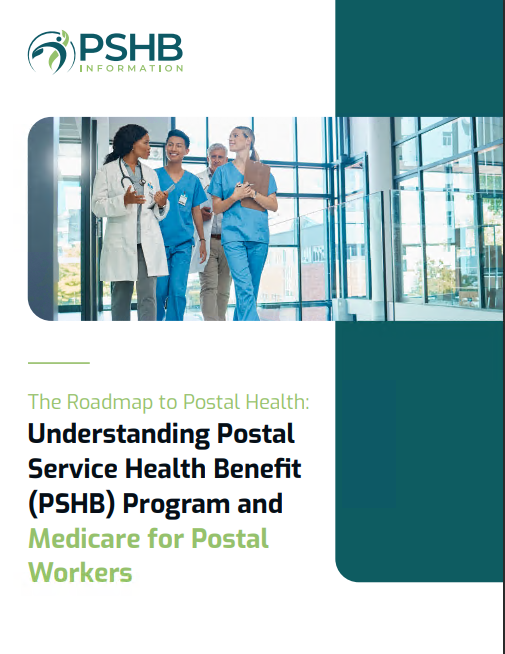Key Takeaways
-
The Postal Service Health Benefits (PSHB) program is designed to meet the unique health coverage needs of USPS employees, annuitants, and their families. Understanding enrollment timelines and coverage options is essential.
-
Reviewing plan details, cost-sharing structures, and Medicare integration can help you make informed decisions during Open Season or qualifying life events.
Understanding the Basics of PSHB
The Postal Service Health Benefits (PSHB) program is the cornerstone of health coverage for Postal Service employees, annuitants, and their eligible family members. If you’re transitioning from the Federal Employees Health Benefits (FEHB) program or are enrolling for the first time, the PSHB program may feel overwhelming at first. But with the right resources and information, you can confidently navigate this essential aspect of your benefits package.
Let’s break it down step by step to make the process clearer, starting with eligibility and enrollment timelines.
Who Can Enroll in PSHB?
Eligibility for PSHB is straightforward but important to confirm. You’re eligible if you are:
-
A current Postal Service employee.
-
A Postal Service annuitant (retiree).
-
A family member of an eligible employee or annuitant, including spouses and dependent children.
Each member of your family has specific enrollment requirements, so ensure everyone’s information is up to date.
Key Enrollment Periods to Know
Enrollment in the PSHB program is limited to specific windows. Missing these dates can delay your access to vital health coverage, so mark your calendar for the following periods:
Open Season
The annual Open Season is your primary opportunity to review and select health plans. This period runs from November 11 to December 13, giving you about a month to make changes or confirm your coverage. Any adjustments you make during Open Season take effect starting January 1 of the following year.
Qualifying Life Events (QLEs)
Life doesn’t always align with Open Season, and that’s where QLEs come into play. Events such as marriage, divorce, the birth of a child, or retirement allow you to modify your PSHB plan outside the usual enrollment periods. Typically, you’ll have 60 days from the date of the event to make changes.
Special Enrollment for New Employees
If you’re a new Postal Service hire, you have a 60-day window to enroll in the PSHB program. Failing to act within this timeframe could result in a lapse in health coverage until the next Open Season.
How Does PSHB Compare to FEHB?
The PSHB program builds upon the foundation of the FEHB system but tailors its offerings specifically to Postal Service employees. Here are some key differences:
-
Premiums and Contributions: The government’s contribution covers approximately 70% of premium costs, just like FEHB. However, specific PSHB plans often feature lower premiums compared to their FEHB counterparts.
-
Medicare Integration: If you’re eligible for Medicare, many PSHB plans offer enhanced benefits, such as reduced deductibles and lower out-of-pocket costs, when Medicare Part B is used in conjunction with PSHB.
-
Plan Variety: PSHB offers a range of plan types, from high-deductible health plans (HDHPs) to more traditional PPOs and HMOs. Each plan has unique cost-sharing structures, so compare options carefully.
Breaking Down Costs and Coverage
Understanding how costs are structured in PSHB plans can help you choose the right option for your budget and healthcare needs. Let’s take a closer look at the main cost elements:
Premiums
While the government covers a significant portion of your premium, you’ll still need to pay a share. Premiums vary depending on the type of plan you choose and whether it’s for Self Only, Self Plus One, or Self and Family coverage.
Deductibles and Copayments
Deductibles in PSHB plans range from $350 to $2,000, depending on whether you select a low- or high-deductible plan. Copayments also differ based on the service—primary care visits typically cost between $20 and $40, while specialist visits may be higher.
Out-of-Pocket Maximums
To protect you from excessive medical expenses, PSHB plans cap your annual out-of-pocket costs. For 2025, the maximum is $7,500 for Self Only coverage and $15,000 for Self Plus One and Self and Family coverage for in-network services. Out-of-network limits are higher, so staying in-network can save you significantly.
Coordinating PSHB with Medicare
If you’re a Postal Service annuitant or family member aged 65 or older, Medicare integration is a key benefit of the PSHB program. Here’s how the two work together:
-
Medicare Part B Enrollment: Most Medicare-eligible PSHB enrollees are required to enroll in Part B. This provides access to lower deductibles and copayments for many PSHB plans.
-
Prescription Drug Coverage: PSHB plans include a Medicare Part D Employer Group Waiver Plan (EGWP) for enrollees with Part B. This eliminates the need to purchase separate prescription drug coverage.
-
Cost Reductions: By combining PSHB and Medicare Part B, you can lower your overall out-of-pocket costs, especially for hospital stays, specialist visits, and medications.
Tools to Simplify Your Enrollment
Navigating the PSHB program is easier when you utilize the right tools. Here are a few resources you can rely on:
Plan Comparison Tools
Use online tools to compare the premiums, deductibles, and out-of-pocket costs of different PSHB plans. These platforms let you filter options based on your specific healthcare needs.
Official Brochures
Each PSHB plan publishes a detailed brochure outlining covered services, cost-sharing details, and additional benefits. Reviewing these brochures is essential to making an informed choice.
OPM Resources
The Office of Personnel Management (OPM) website offers comprehensive resources, including FAQs, plan information, and contact details for PSHB administrators.
Contact Customer Service
If you have specific questions about your PSHB plan, contacting customer service can provide clarity. Most plans have dedicated representatives who can explain coverage details and assist with enrollment.
Tips for Making the Most of Your Coverage
Once you’ve enrolled in a PSHB plan, maximizing your benefits is the next step. Here are a few tips:
Stay In-Network
Using in-network providers can save you money by minimizing out-of-pocket costs. Most PSHB plans have an extensive network of hospitals, doctors, and pharmacies.
Take Advantage of Preventive Services
Preventive care, such as annual check-ups and vaccinations, is often covered at no additional cost. Prioritize these services to maintain your health and avoid future expenses.
Review Your Benefits Annually
Even if you’re happy with your current plan, it’s wise to review your benefits during Open Season. Changes in premiums, coverage, or your personal health needs may prompt you to switch plans.
What Happens If You Miss Enrollment?
Failing to enroll in a PSHB plan during Open Season or within a QLE window can leave you without coverage until the next enrollment opportunity. However, exceptions may apply in cases of significant hardship or administrative errors. It’s crucial to act promptly during your eligible periods to avoid gaps in coverage.
Ready to Take Control of Your PSHB Benefits?
The Postal Service Health Benefits program offers a comprehensive solution to meet your healthcare needs, but understanding its intricacies is vital. By staying informed, reviewing your options, and utilizing the tools and tips outlined here, you can confidently navigate enrollment and maximize your coverage.








